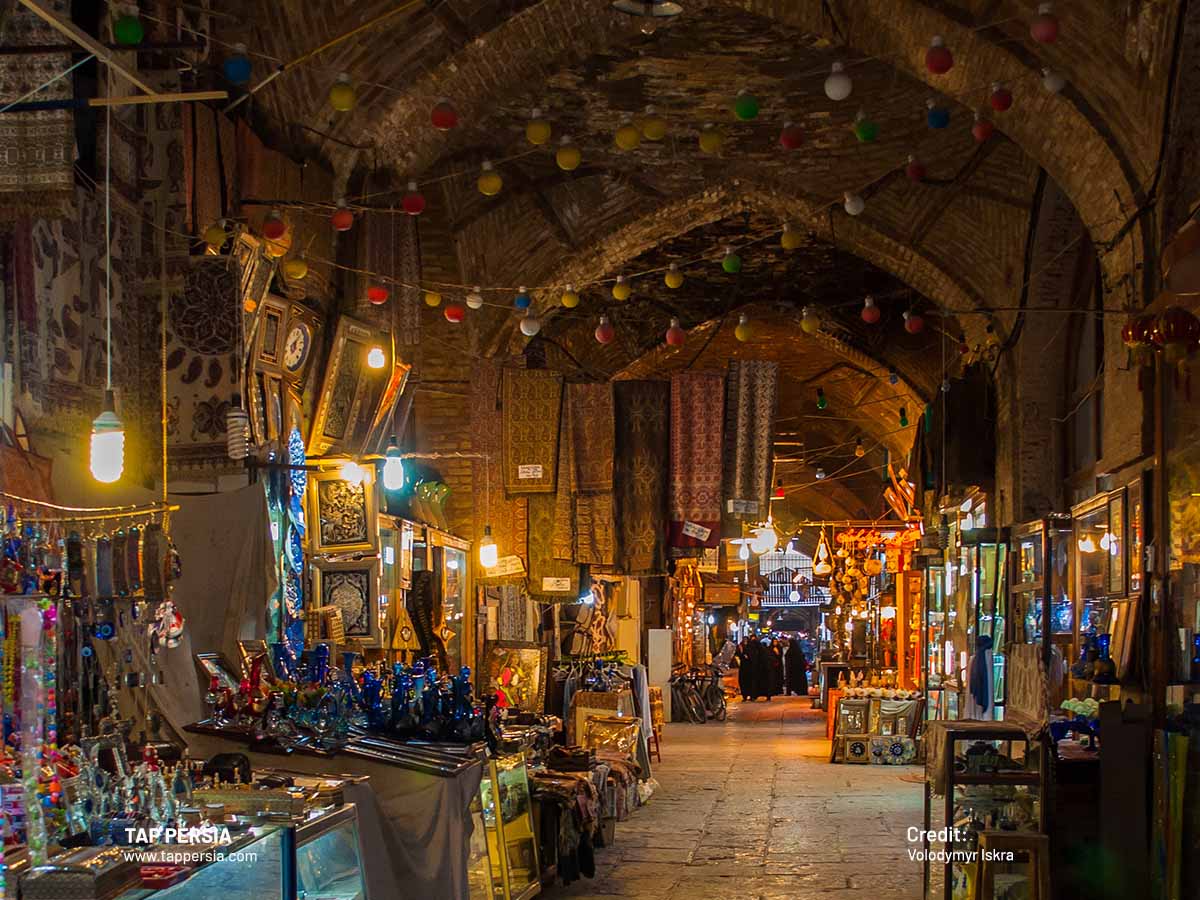
The provincial capital of Iran is the historic city of Isfahan. It resembles a human-populated living museum. There are many historical Isfahan monuments, artworks, and antiques. It is renowned for its Persian-Islamic architecture and handicrafts, including khatam-kari, kalamkari, and vitreous enamel. Isfahan is regarded as the artistic hub of Iran. Isfahan, which lies in the country’s heartland, is close to Yazd, a UNESCO World Heritage Site.
After Mashhad and Tehran, Isfahan is the third-largest city in Iran. Isfahan, Nesfe Jahan(Iran historical sites), which translates to “Isfahan is Half of the World,” is a saying in Persian. Each journey to Iran often includes a stop in Isfahan, which is regarded as one of Iran’s most well-known and important tourist destinations. Here are some of the top 15 Isfahan historical places:
1.Naqsh-e Jahan Square
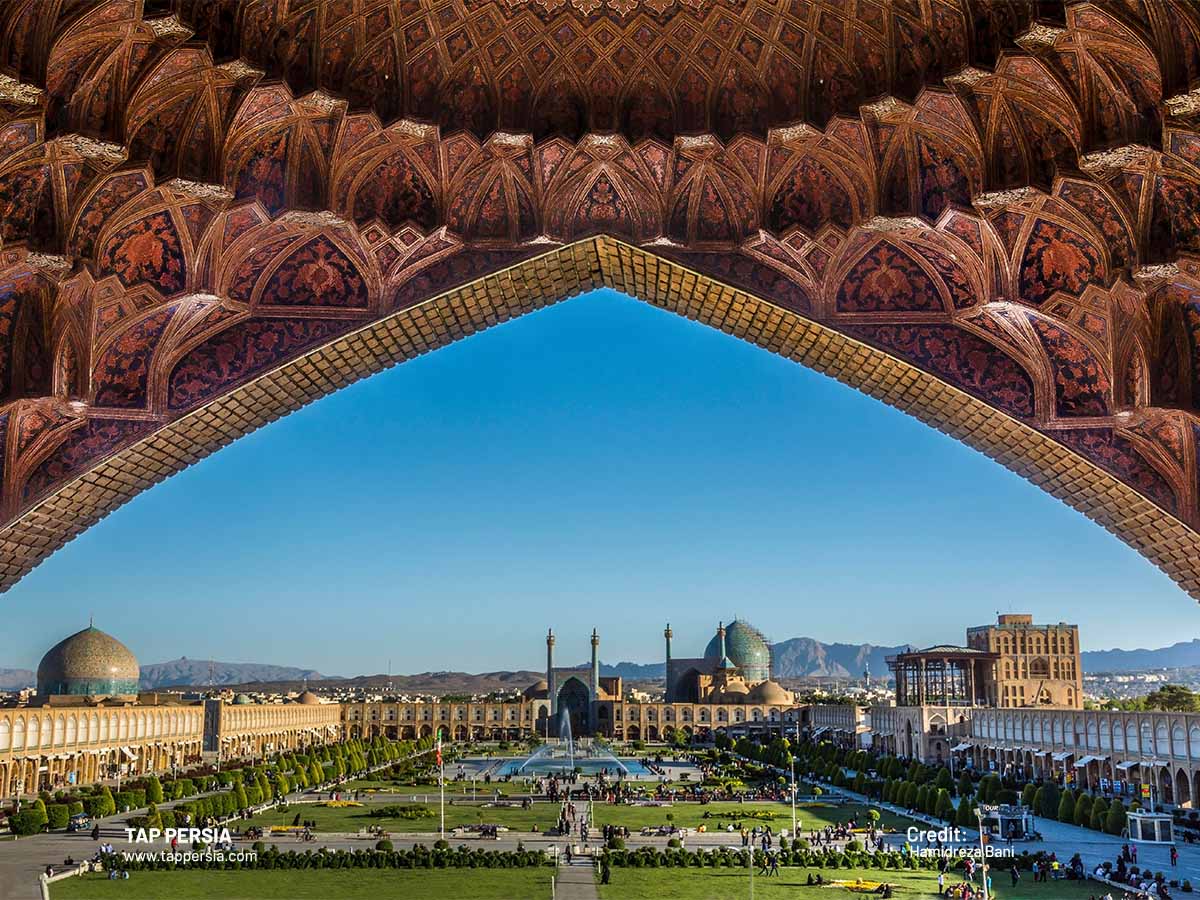
The Royal Mosque, the Sheykh Lotfollah Mosque, the majestic Qaysariyyeh Portico, and the Timurid palace from the fifteenth century are all well-known attractions at the location. One of the best Isfahan historical sites. Shah Abbas I the Great constructed it at the start of the 17th century, and a network of two-story arcades joins massive structures around it on all sides.
They are an impressive example of the complexity of Persia’s social and cultural life at that period. The dimensions of this square are around 165 meters broad by 500 meters long. The Qaisarieh gateway, the Ali Qapoo Edifice, and the Sheikh Lotf Ol-lah and Abbasi Mosques are also nearby.
Shah Abbas I and his successors used this area as a gathering place for festivals, polo matches, theater productions, and military parades. At this enigmatic, magnificent, classically oriental plaza, which is flanked by hundreds of stores, you may see and purchase the most exquisite souvenirs from Isfahan, such as Khatam, Mina, Firuze (turquoise), Mes (copper pots) and Ghalamkari. There, you might take a carriage pulled by horses. Remember that the first place you must visit in Isfahan is Naghsh-e-Jahan Plaza.
2.Sheikh Lotfollah Mosque
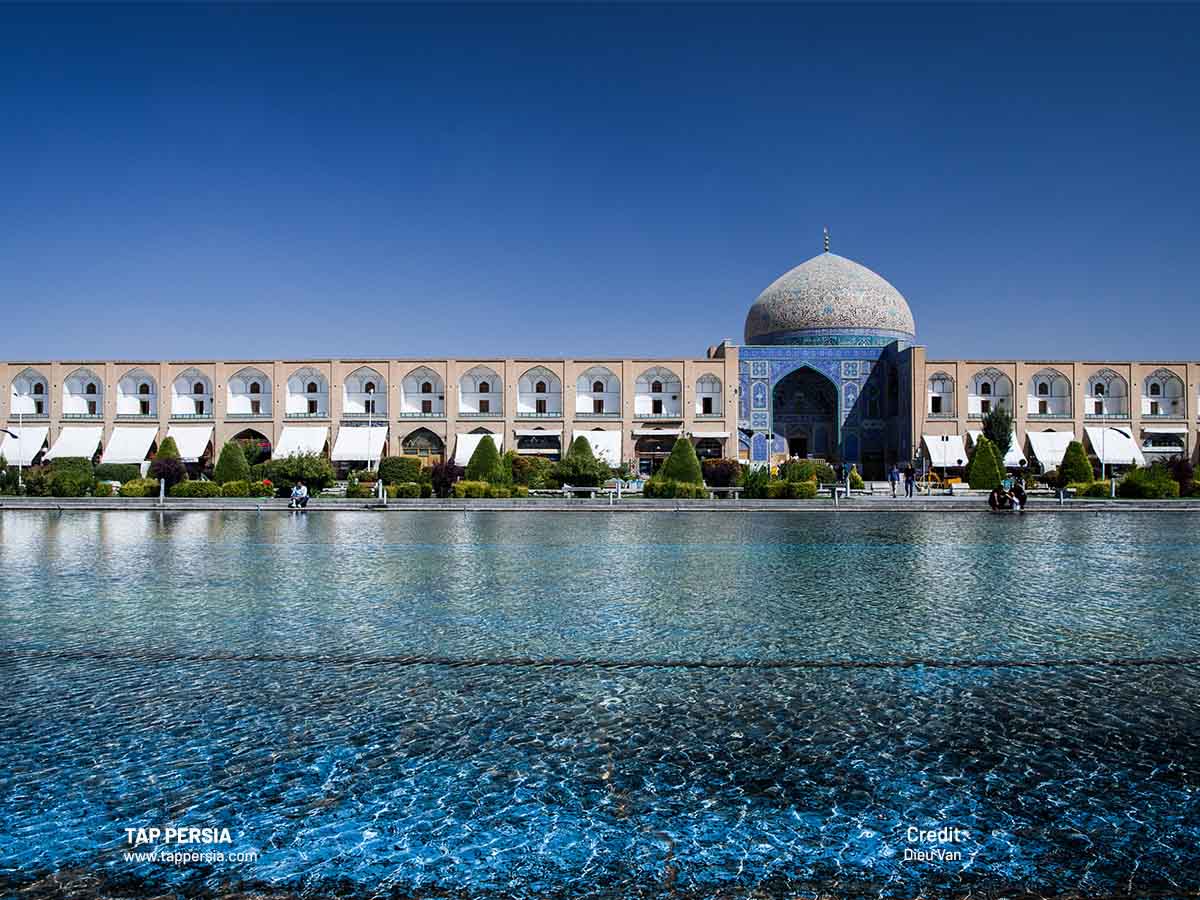
Another priceless Safavid jewel on our list which is among the top Isfahan historical places is the Sheikh Lotfollah Mosque. There aren’t any minarets or courtyards in this mosque, unlike all the others. One may scarcely believe that this masterpiece is the creation of a human creature, according to Iranian-respected American art expert Prof. Arthur Upham of this mosque.
The dome’s first expression while facing upward is that of a peacock flaunting its tail. On tile mosaics inside the Mihrab, the name of the mosque’s architect is written in calligraphy. Under the main dome construction is where the Shabestan (winter prayer hall) is located. Once you enter the Shabestan, a vision of an enormous blue ocean appears before your eyes.
3.Shah Mosque
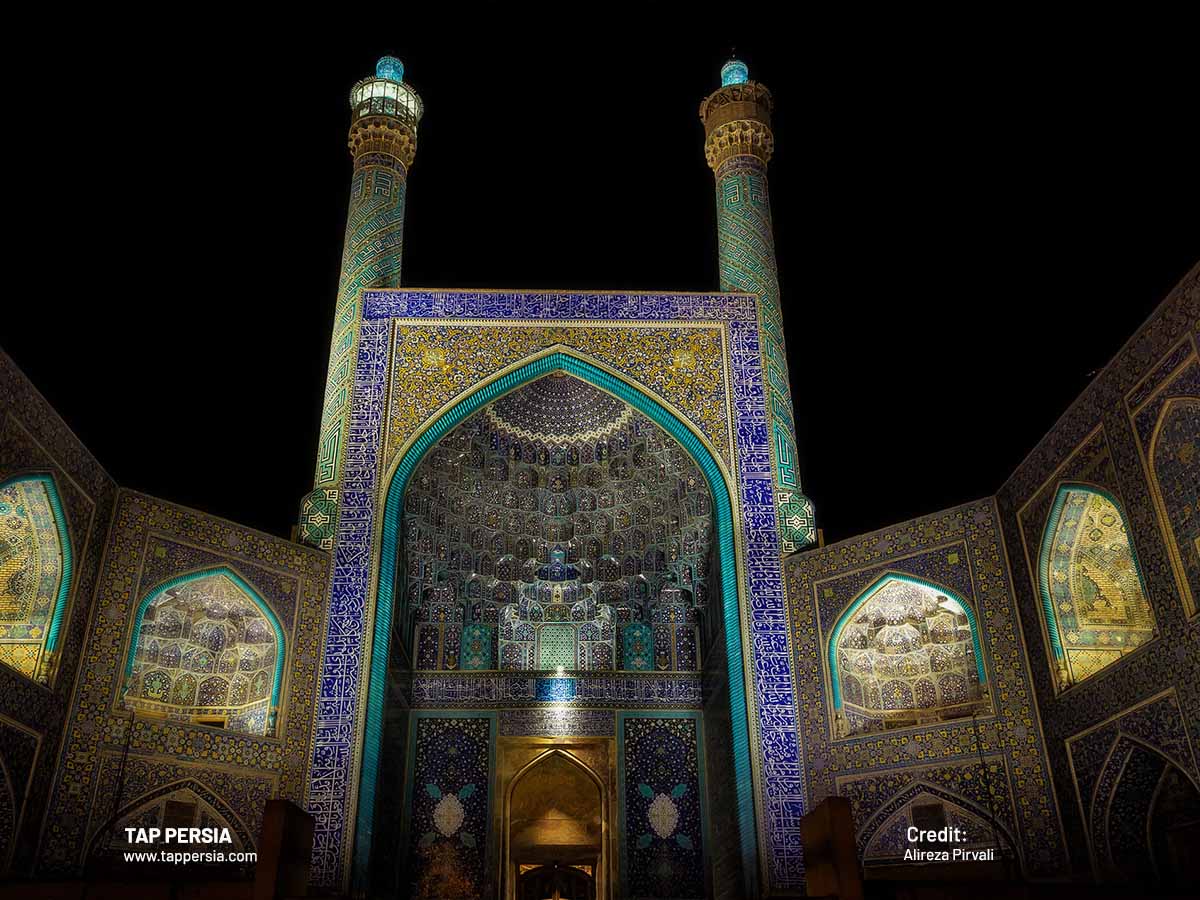
Masjid-i Shah, also known as the Royal Mosque, Jame Abbasi Mosque, and Masjid Soltani, is another name for the Masjid-e Imam (Shah Mosque). It is situated close to Naqsh-e Jahan plaza in the heart of the city of Isfahan and is regarded as a masterpiece of Islamic-era Iranian architecture.
One of the most significant Isfahan historical places is this mosque, which was built during the Safavid era under Shah Abbas, the Safavid Emperor. The Imam mosque, the most noteworthy instance of Persian architecture from the Islamic era, is one of Isfahan’s most popular attractions. The highest quality in woodwork, tiling, and Isfahan historical architecture can all be found in this structure.
In 1931, Iran designated the Shah Mosque as a National Monument. It is one of the Isfahan historical sites in Naqsh-e-Jahan Plaza that are part of the UNESCO World Heritage List. There is a stone that doesn’t match the other rocks right in the middle, underneath the main dome.
This stone marks the critical acoustic position of the Shah Mosque. As the sound from this place reverberates greatly throughout the rest of the structure, the Imam can pray in the mosque at a lower volume and yet be heard by everyone. If you want to test the quality, you may stomp on the stone, clap your hands while standing on it, or throw a book on it. The loud sound is audible throughout the mosque and is apparently being tested by many of the tourists who visit it.
4.Vank Cathedral
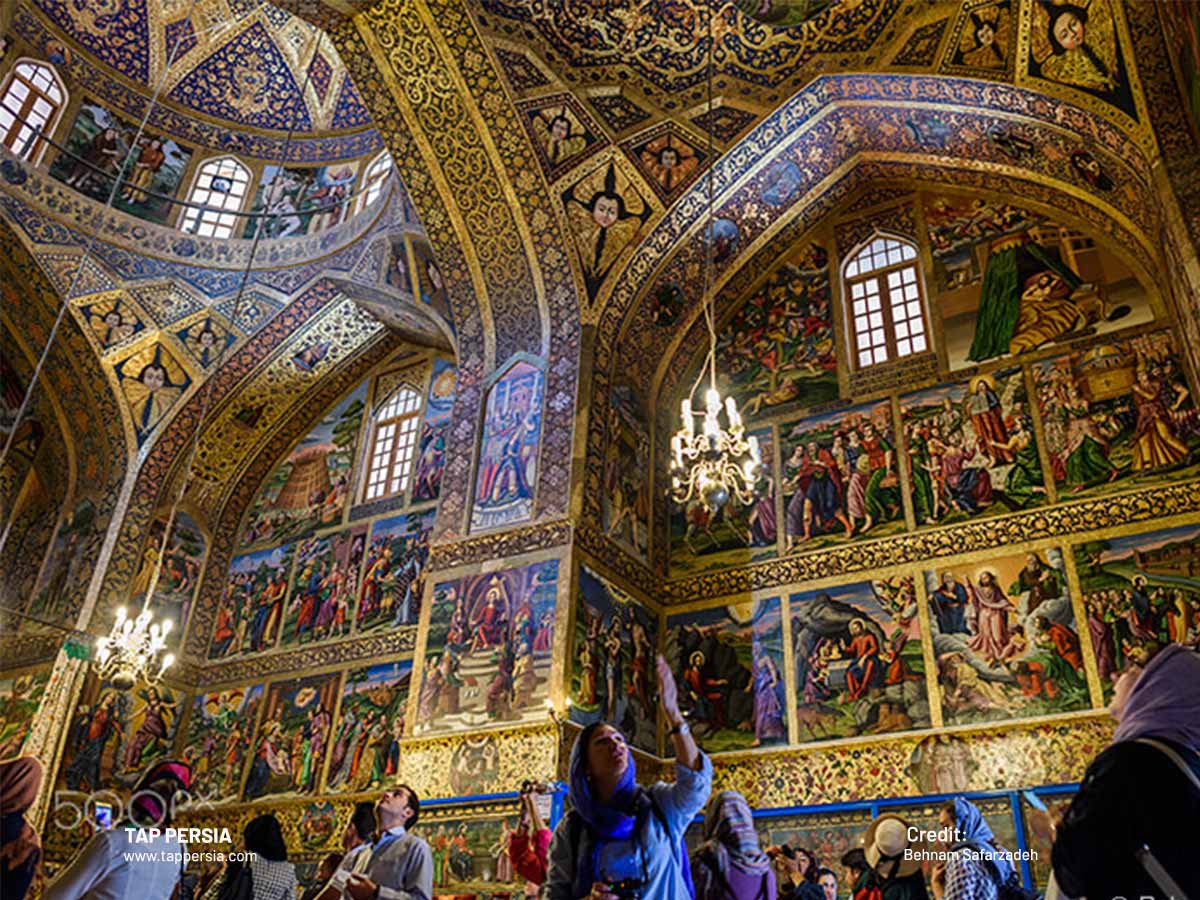
The Vank Church, located in the Julfa (Jolfa) neighborhood, is one of the biggest and most impressive Isfahan historical places. It is unparalleled for its golden dome interior, ceiling and rich historical artworks. On the inside walls are oil paintings that are similarly gilded to Persian art. Italian influences may be seen in the religious art displayed here. Shah Soltan Hossain Safavid was in charge of the structure’s layout. The architect of the structure was Shah Soltan Hossain Safavid. A wainscot with skillful frescos, intricate tile work, and gold embellishments can be found within.
The breath-taking blue and gold painting on the central dome depicts the Biblical account of the world’s creation and man’s expulsion from Eden. The pendentives of the chapel are embellished with an Armenian art motif that features a cherub’s head surrounded by folded wings. The ceiling above the entrance is elegantly decorated with floral patterns reminiscent of Iranian miniatures.
5.Khaju Bridge (Pol-e Khajoo)
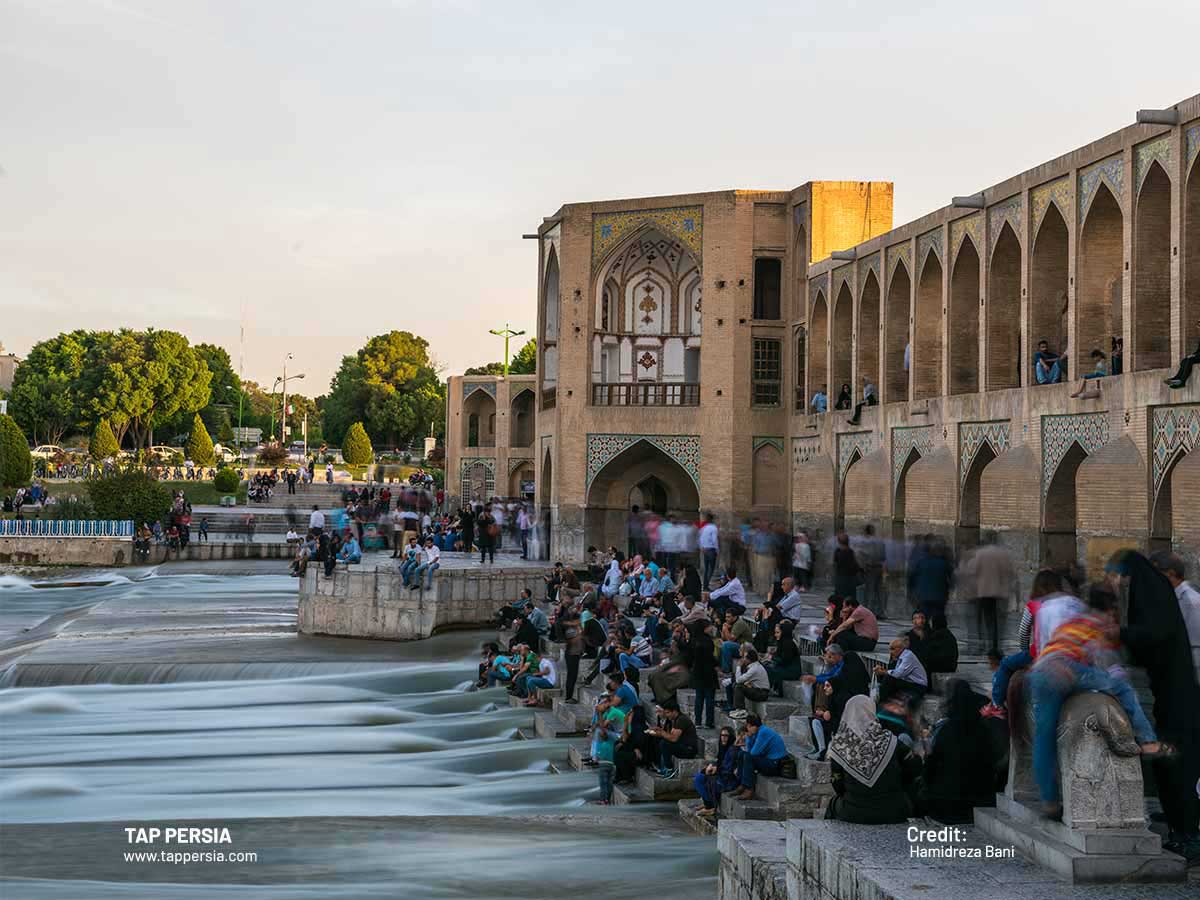
The Khaju Bridge, one of Iran’s most iconic bridges, was constructed in the early 1650s under the direction of Abbas II, the seventh Safavid shah (ruler) of Iran, on the remains of a previous bridge. The bridge was apparently reconstructed in 1873, according to the still-visible inscriptions. The Pole Khaju or Shahi Bridge is Isfahan’s most stunning bridge.
The Safavid sovereign of Persia, Shah Abbas II, gave the order to build this bridge in 1650. It functions as a building, a place for gatherings of the general public, a weir and a bridge. This bridge is embellished with exquisite tile work and wonderful murals. Shah Abbas (King Abbas) used to sit on a pavilion in the center of the building to take in the view. Yet all that’s left of the king’s chair is the stone seat. Cubicles, ornaments, and tile work are all interesting aspects of the construction.
The building known as Beglarbegi is situated in the center of the bridge. The royal family briefly remained at the same location. The name of this bridge plays on the word “Khajeh,” which was used to refer to important people during the Safavid era. The Zayandeh Rood River is where it was built. The bridge currently has beautiful tilework and unique artwork.
The bridge is still in use despite having been constructed 350 years ago. The location promotes leisure, culture, and social connection. Particularly at night when they are illuminated by powerful lights, the bridge’s spectacular arches command everyone’s quick attention.
While the Khaju Bridge and Si O Se Pol Bridge are iconic landmarks of Isfahan, the city boasts several other architectural marvels that span its rivers. Dive deeper into the history and significance of these structures by exploring The Bridges of Isfahan, a comprehensive guide to the city’s magnificent bridges.
6.Si O Se Pol Bridge

The Si-o-se-pol Bridge sometimes referred to as the Allahverdi Khan Bridge or 33 Bridges, is a 300-meter-long, 14-meter-wide stone double-deck arch bridge that crosses the Zayanderud River. It is among the world’s and Iran’s finest examples of bridge architecture. In 1005 AH, Allah Verdy Khan, a renowned commander of Shah Abbas Safavid I, directed and funded the construction of the same building. Armenians used to have special festivals near this bridge during the Safavid era.
An attractive location for a teashop with access from the southern side is near the beginning of the bridge, where there are more arches on a broad plane. Two levels comprise the arches. The lower level contains 33 arches, compared to the top level’s two arches above the lower level’s arch and one arch above the pier.
Two high walls that protect cars from the weather and guard pedestrians from falling enclose the road leading to the top level. Iranians consider the Si-o-se Pol Bridge to be a big structure associated with water. The bridge has served as Isfahan’s most recognizable landmark since it was originally constructed till the present.
7.Jameh Mosque of Isfahan

The Jameh Mosque sometimes referred to as the dream tunnel, mocks 14 centuries of Iranian architectural excellence. The Jameh Mosque was added to the list of world-historic sites in 2012. The most spectacular brick dome structures among its beauty are the Nizam al-Mulk and Taj al-Mulk domes.
At the Jameh Mosque of Isfahan, the Oliyatou Mihrab (the altar of Master Hydar) includes a unique plaster sculpture that completes the brickwork. A low-rise entrance after the Oliyatou prayer hall takes you to one of the grandest Shabestans (winter prayer halls), which is well-known for the sight of lights shining through a marble roof.
8.Chehel Sotoun
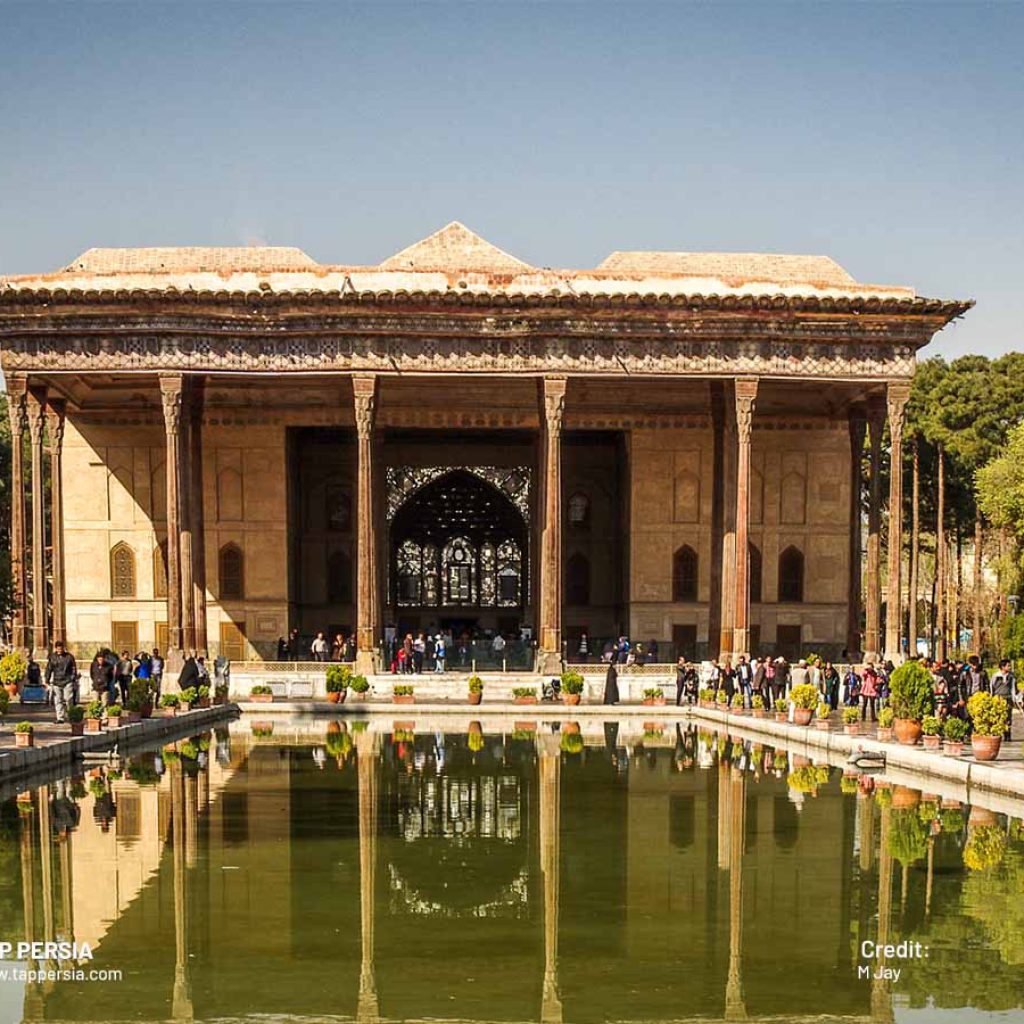
The continuous traditional Persian garden that envelops this castle was added to the World Heritage List in 2011. The Columned Hall, Mirror Hall, and Throne Hall make up the Chehel Sotun Palace. This castle is one of the best Isfahan historical places that features a unique décor for each room. The palace’s interior is embellished with mirror work, and the hallways are adorned with numerous Safavid-era fresco paintings. The magnificent reception Hall is situated just beyond the Mirror Hall. The six substantial paintings on the walls reflect certain historical events, such as royal entertainment celebrations and parties.
9.Ali Qapu Palace
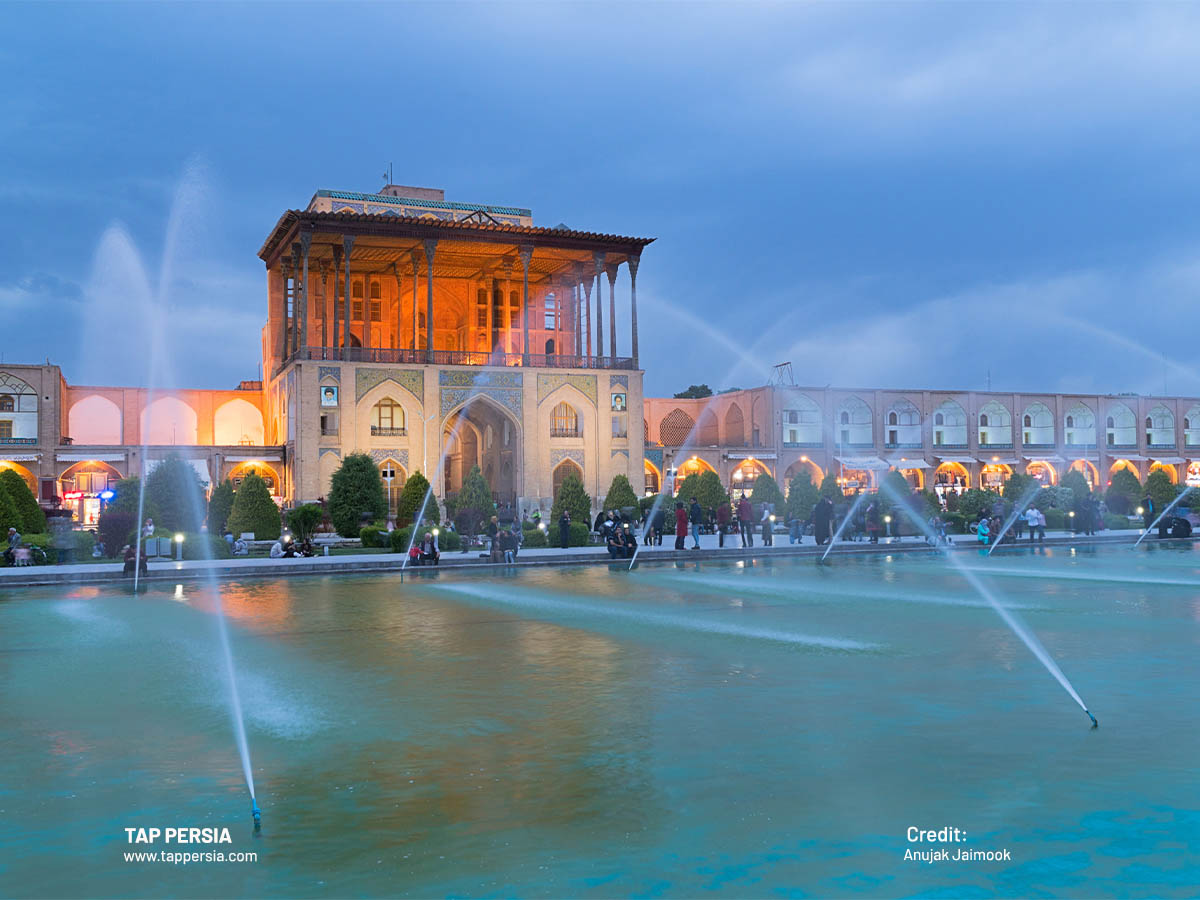
One of the primary Isfahan historical places and royal residences of the Safavid era is Ali Qapu. 18 wooden columns that support the balcony were each crafted from a single plane tree trunk. Have you ever visited a spot that seems to be frozen in time, with the surroundings remaining much as they were hundreds of years ago? A once-in-a-lifetime opportunity to view Naqsh-e Jahan Square from the palace balcony will transport you to the earlier days of Isfahan.
The Iranian art of Gach Bori is evident in the delicate and precise construction of the acoustic music hall on the sixth level (plasterwork).
10.Moshir-al-Molk Historical House
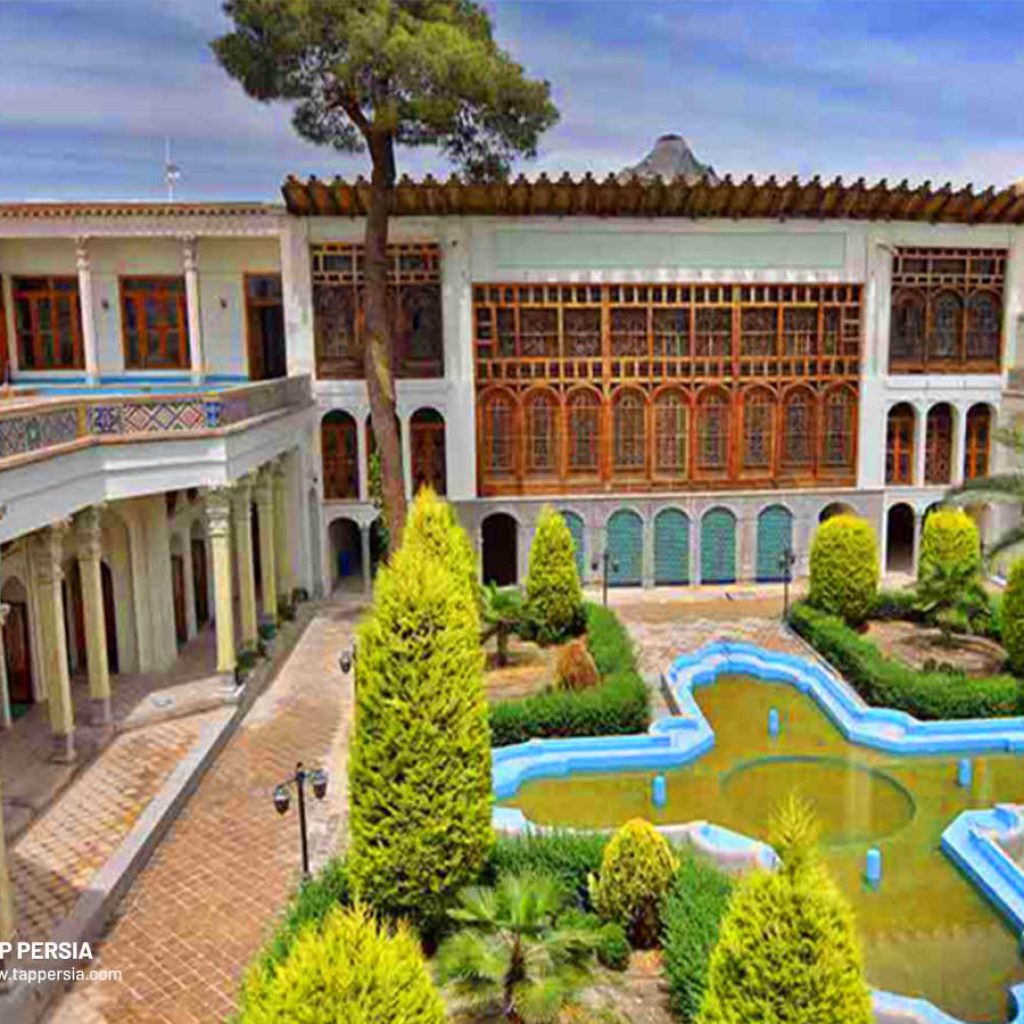
This one is one of the oldest Isfahan tourist attractions, a historical home that was built during the Safavid and Qajar dynasties. Indeed, this mansion was a fusion of a Safavid-era piece of art. This lovely old home features a library, gallery, and stately halls. In Isfahan, the Moshir-al-molk Historical House is a landmark that radiates while displaying Islamic art.
The Museum of Islamic History, also known as the Moshir-al-molk Ansari Historical House, is situated on Isfahan’s Hatef Street. It displays some of the most priceless Islamic artifacts, such as painting collections, Persian calligraphy, and a chronicle of Islamic construction. One of the Safavid dynasty’s aristocratic Isfahan historical landmarks is the Moshir-al-molk House.
One of the best Isfahan historical places is the Moshir-al-molk Heritage Mansion. The distinctive and regal architectural designs of this home surpass those of its Qajar contemporaries. The spring chamber and the alcove where Iran’s largest sash window (Orosi) was constructed are the highlights of the home. In two aspects, the ancient Moshir-al-molk Ansari residence is superior to other Qajar buildings. The first is that it was built with royal authority, and the second is because it was the forerunner of modern architecture. This building’s Howz Khaneh (pond house) and Shahneshin are both gems in and of themselves. The largest and most ancient Orosi (sash window) in Iran sits on the shahneshin of this home.
11.Menar Jonban
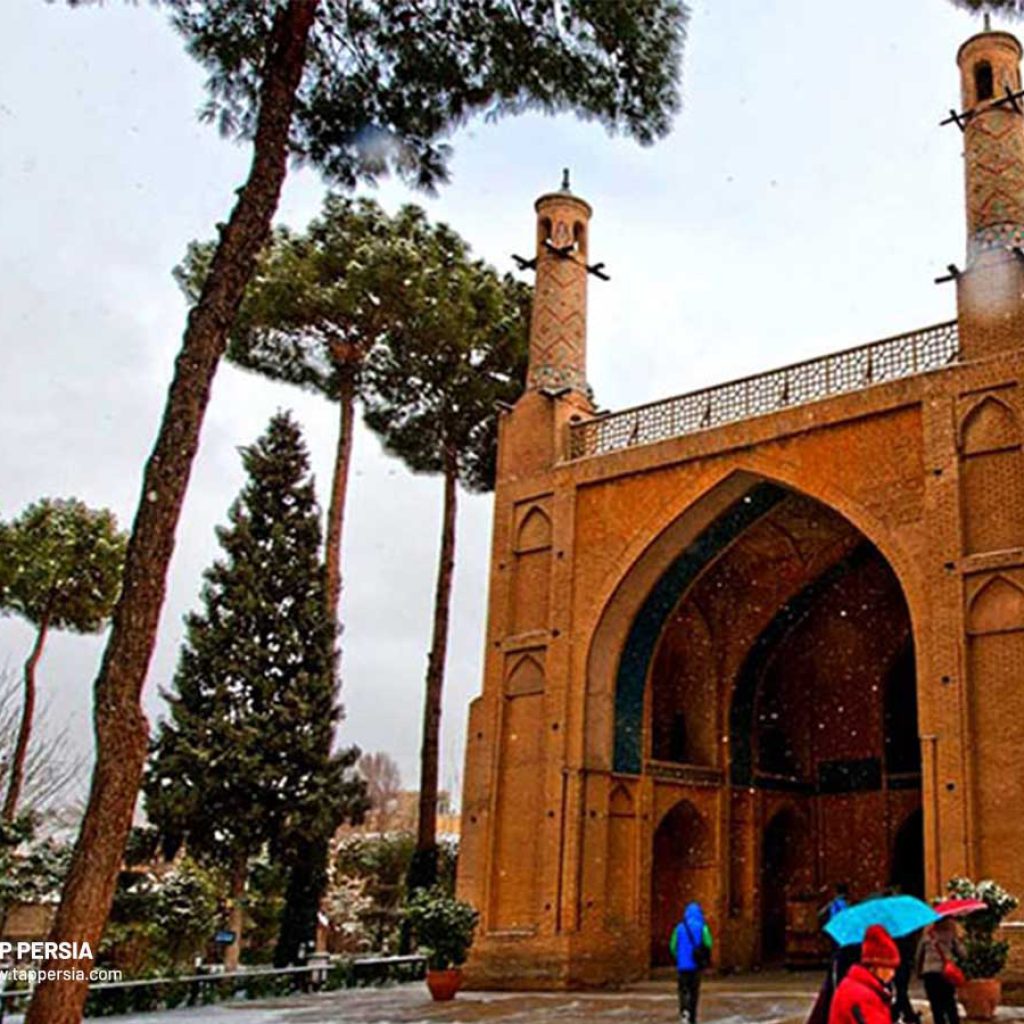
Above Amu (Uncle) Abdollah’s headstone lies a shrine called Menar Jonban, one of the Isfahan heritage sites that dates to the fourteenth century. Because of its exquisite construction, Menar Jonban is regarded as one of Isfahan cultural sites. The key distinguishing characteristic of this structure is that when one of the minarets shakes violently, the other one begins to shake at the same frequency.
12.Soffeh Mountain (Sofeh Mountain)
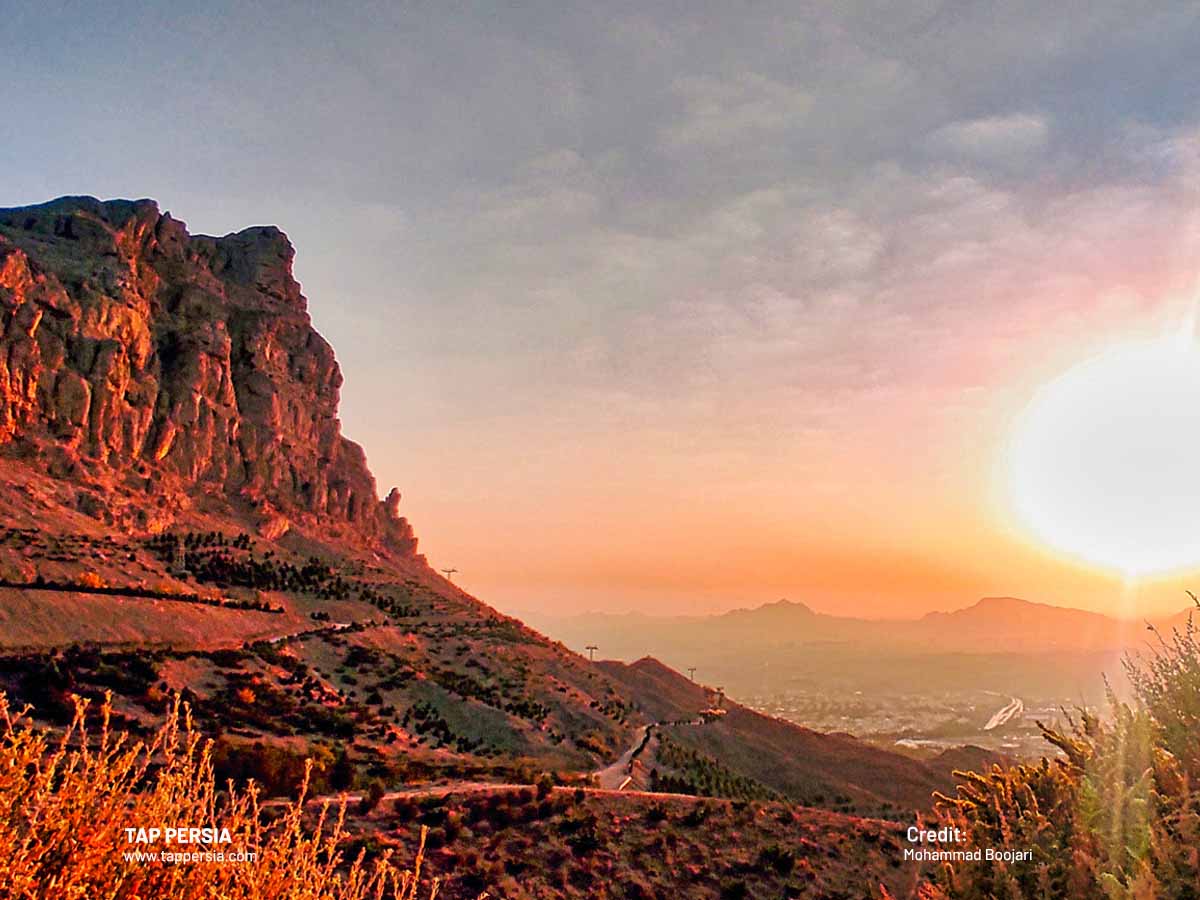
The southern part of Isfahan is protected by a strong, tall mountain. Those who are looking for a moment of relaxation on the lush hills of the picturesque and well-known Soffeh Mountain, also known as Kuh-e Soffeh, call it home. Whether during the day and at night, climbers who toil to reach their summit and visitors who come for a brief stroll before taking in the breathtaking views of the city experience the chilly air caressing their skin simultaneously. This magnificent mountain is located in Isfahan’s southern region. Above all, the Zagros Mountains include this magnificent summit, which is a 2257-meter-high peak. The views are amazing, and there are both easy and difficult paths up the mountain. Even from a distance, the Soffeh Mountain is stunning. This mountain is great towards the top because of a number of magnificent waterfalls and caves.
13.Shahrestan Bridge
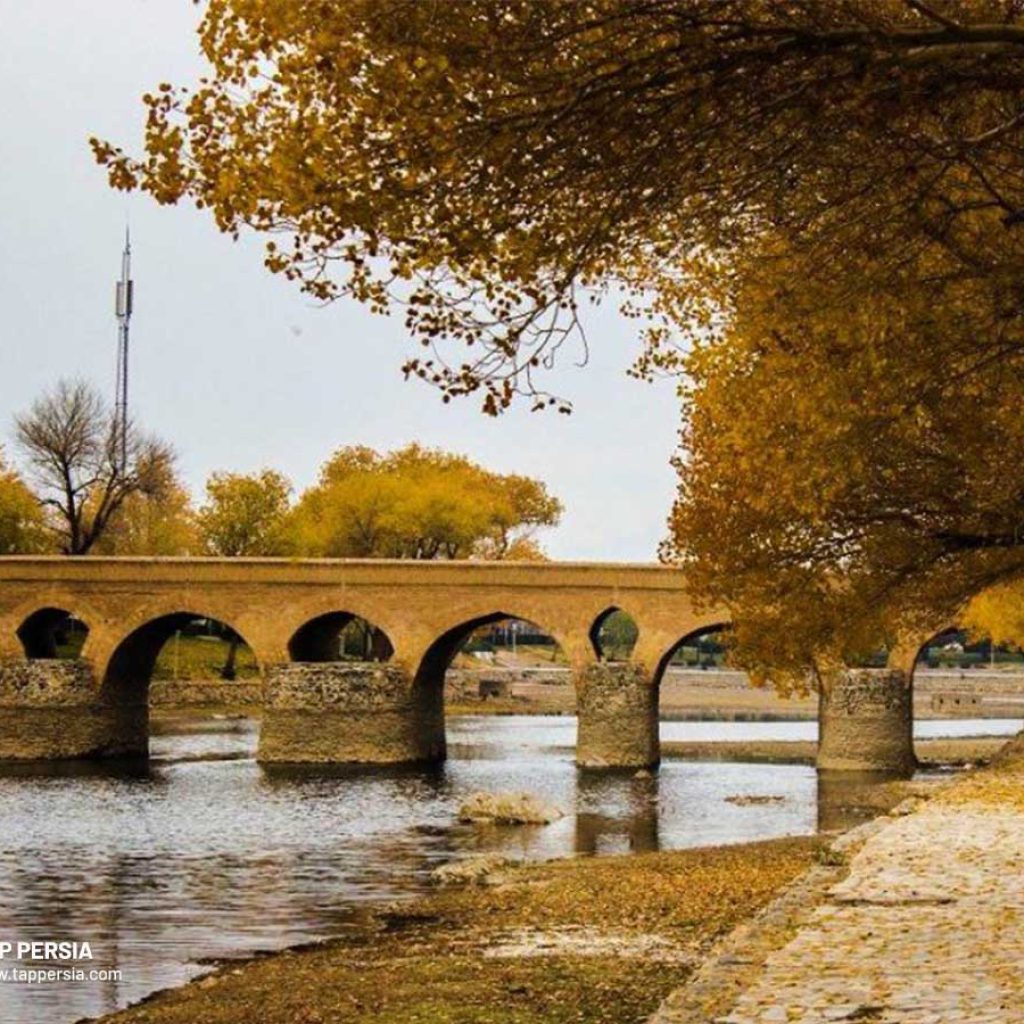
The oldest bridge in Isfahan is called Shahrestan. This bridge is situated in the vicinity of the same-named settlement. According to archaeologists, it was constructed during the Sassanid and Achaemenid dynasties. A structure from the 18th century that served as a tollhouse is located at the northern end of the bridge.
14.Javaheri historical house Isfahan
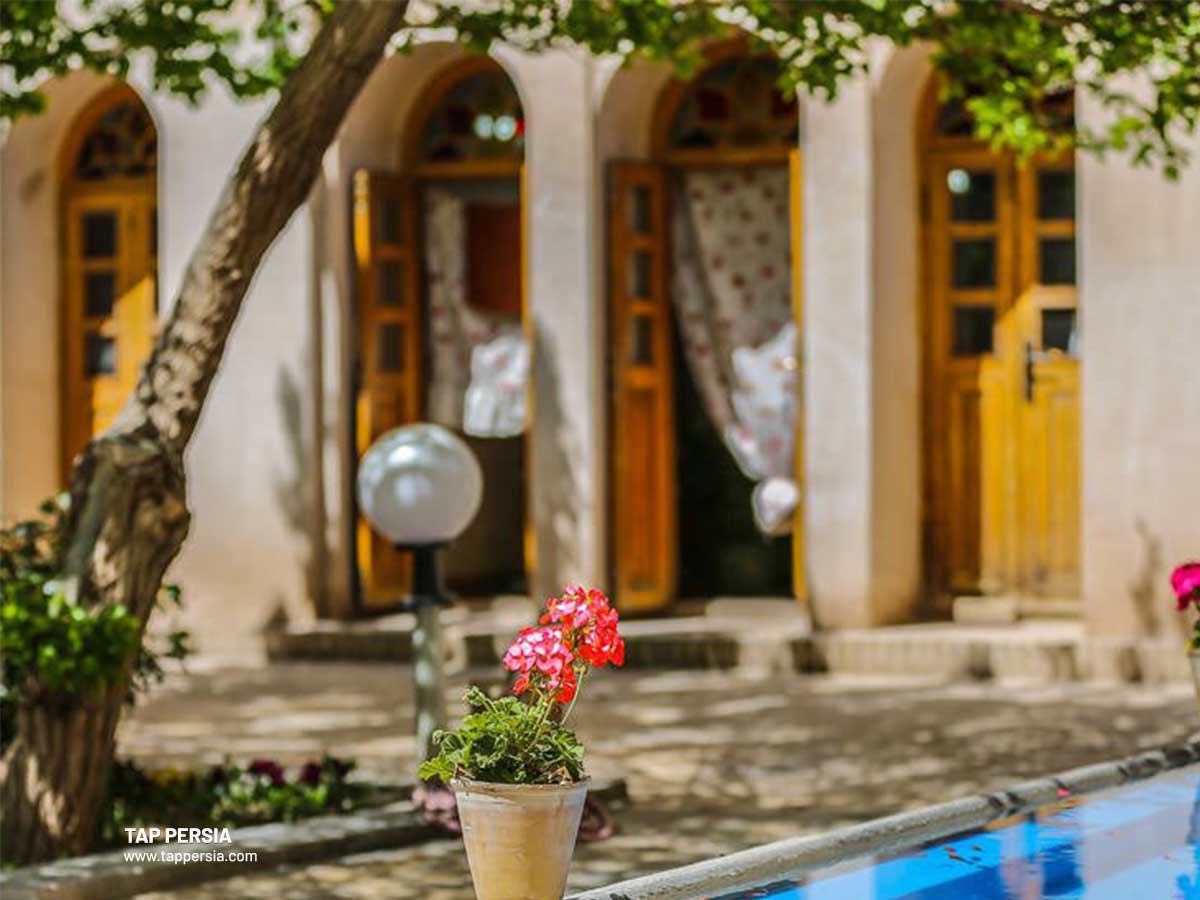
The Javaheri Heritage House is one of the Qajar Dynasty’s most exquisite Isfahan historical places. Next to the twin minarets of Dardasht, this house is situated in Jamale Quarter. With its exquisite lattice windows and spectacular veranda, the home has many distinguishing qualities. The Cultural Heritage and Handicrafts Organization have just established a training and handicrafts facility in this old home. The objective was to provide a location where artists could work effectively, mentor emerging talent, impart knowledge, and market their wares.
From an architectural standpoint, Javaheri House is square in shape. The southern side of the home, which is connected to a corridor, is where the major part of the house is. The house’s western wing includes a three-story side dormer that overlooks the courtyard. The house’s western side is a reflection of the eastern side. A special ambiance is created by the pond’s presence adjacent to a garden with lovely trees. This keeps the home’s historic vibe. The roof is reached by the stairway. You can see Jameh mosque from the rooftop perspective.
The remarkable collection of Javaheri House includes the Persian plaster sculptures of Milk and Sugar, The main hall, also known as Shahneshin, is decorated with arched pans of five and three, as well as colorful glassware. There are several notable instances of tiles used in various ways in the basement, which is on the western side of the house. This old home is home to several handcraft studios, including those for embossing, marquetry, calico work, inlaid works, and lock manufacturing.
15.Jolfa Isfahan
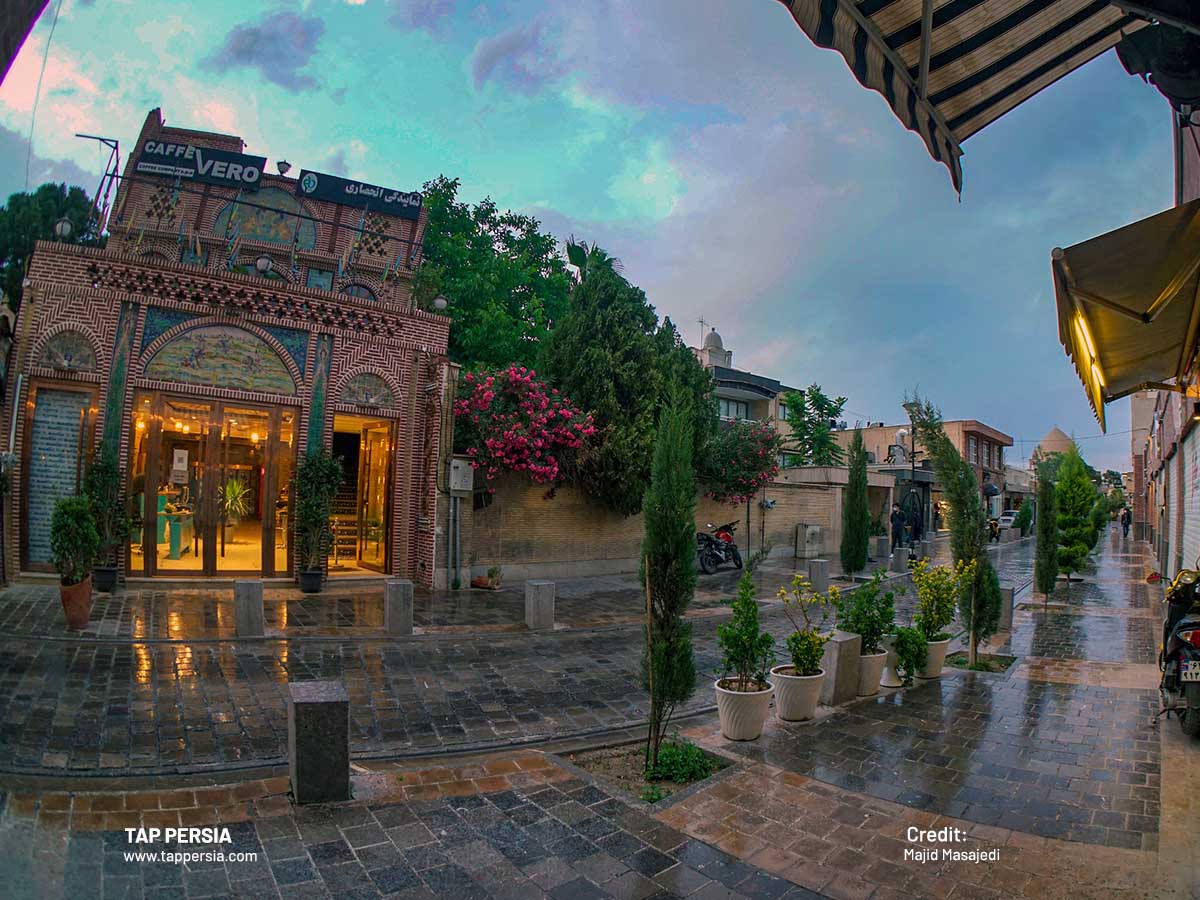
In order to expeditiously finish his historical architectural projects here, Shah Abbas the First ordered the relocation of the whole inhabitants of Jolfa ad hoc, a town bordering Armenia, to Isfahan in the 16th century. The skills of these newcomers as businesspeople, entrepreneurs, and artists were required. So, it was made sure that their right to practice their religion in peace and without interference from the Islamic monuments they were building.
Nowadays, Jolfa is a highly upscale and liberal neighborhood that caters to the requirements of the 6,000 Armenian Christians who still live there. It has many lovely restaurants and cafes, secret churches, and a lively atmosphere in and around the area’s famous Jolfa Plaza. Jolfa is one of Isfahan historical places that no visitor to Isfahan should miss!
While Isfahan boasts a plethora of historical sites and architectural wonders, the entirety of Iran is home to numerous architectural marvels that have stood the test of time. To get a broader perspective on the architectural heritage of Iran, explore the historical architecture sites in Iran, which provides a comprehensive overview of the nation’s rich architectural legacy.
What’s Isfahan famous for?
Isfahan is renowned for its Perso-Islamic architecture, covered bridges, palaces, tiled mosques, minarets and expansive boulevards. Moreover, there are several Isfahan historical places, structures, monuments, artworks, and antiques in Isfahan.
What is the most historical place in Iran?
The Shah Mosque in Isfahan, the Nasir-ol-Molk Mosque in Shiraz, the Ali Qapu Palace in Isfahan, and the Golestan Palace in Tehran are a handful of Iran’s most historic locations.
What is the oldest part of Isfahan?
West of Isfahan, outside the city, Atashgah (the ancient fire temple) is the oldest monument (less than 20 minutes’ drive). For people who are truly interested in ancient history and wish to see such locations, it would be a fantastic spot to visit.
What is the history of Isfahan?
Isfahan has a long history that begins in antiquity. Isfahan was a multicultural, tolerant metropolis under the Achaemenid Empire (648–330 BCE). Isfahan was formerly one of the world’s greatest cities, larger than London, Paris, and Istanbul and comparable to Athens or Rome.
Why is Isfahan called half of the world?
Isfahan is known as the “Half of the World” for several reasons, including its extensive history dating back to the Achaemenid and Sassanid emperors, who built the Fire Temple and the city’s oldest bridge, Shahrestan Bridge, respectively.

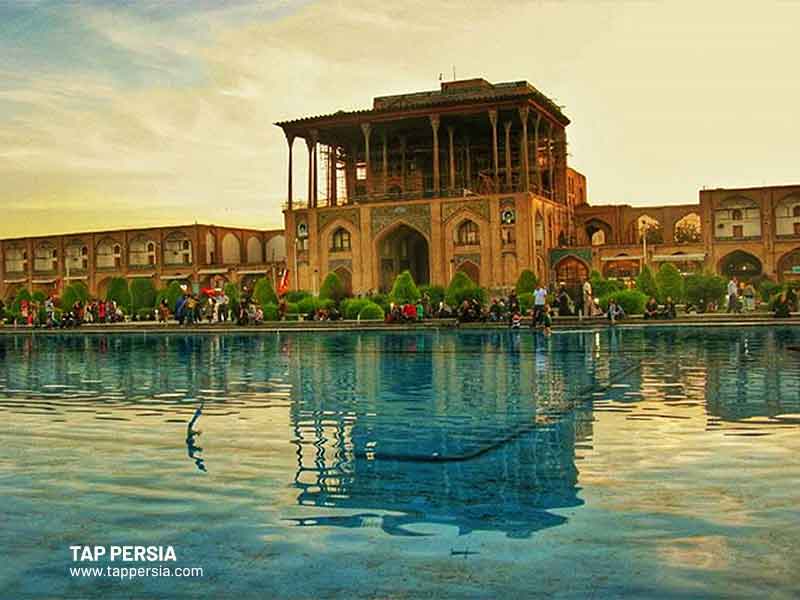


Comment (0)